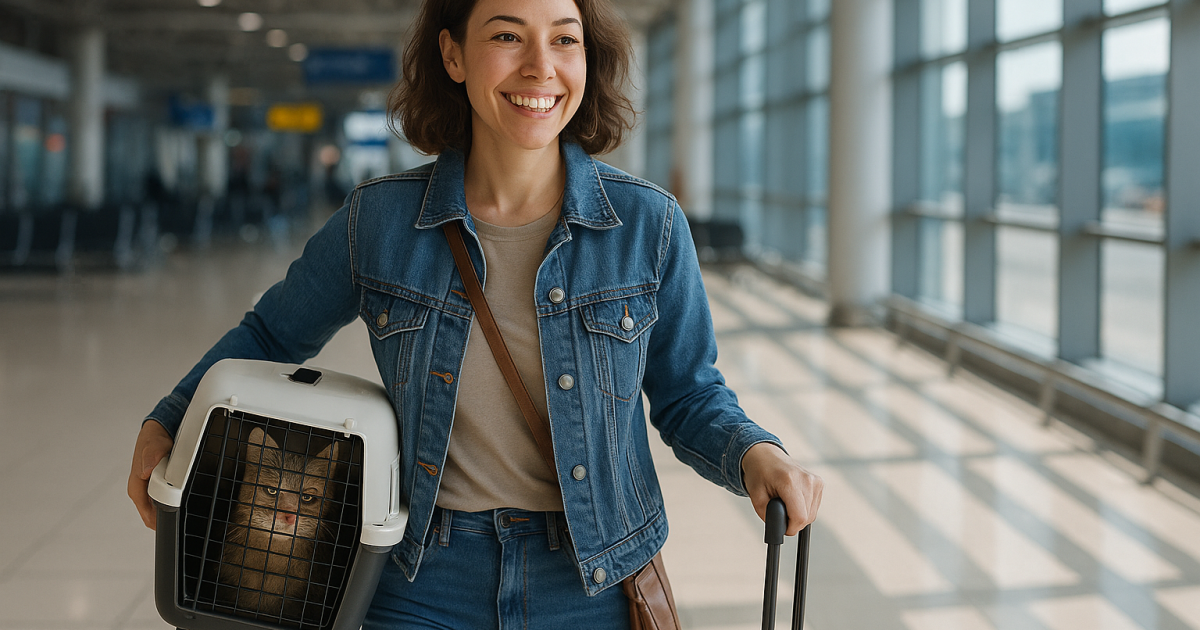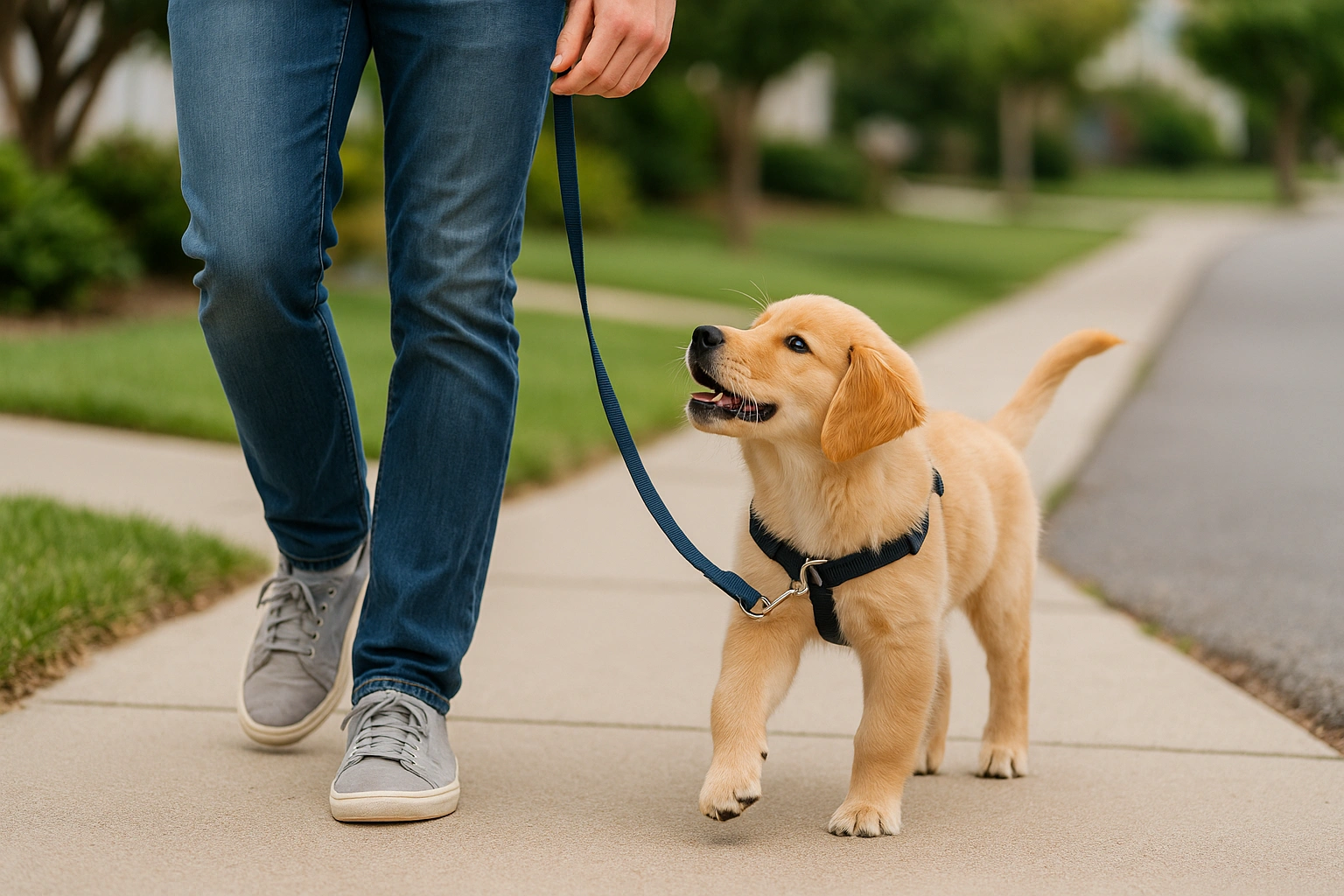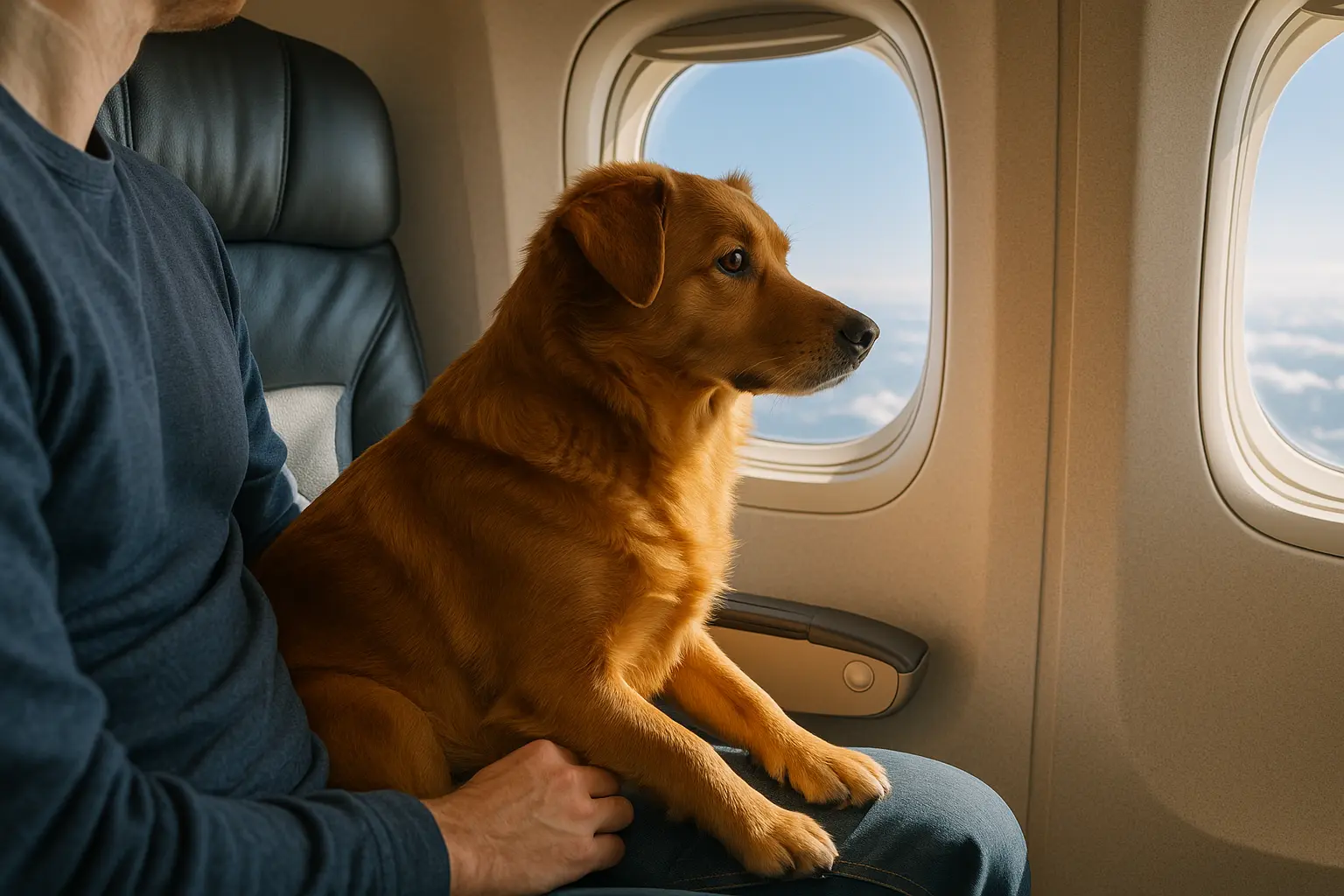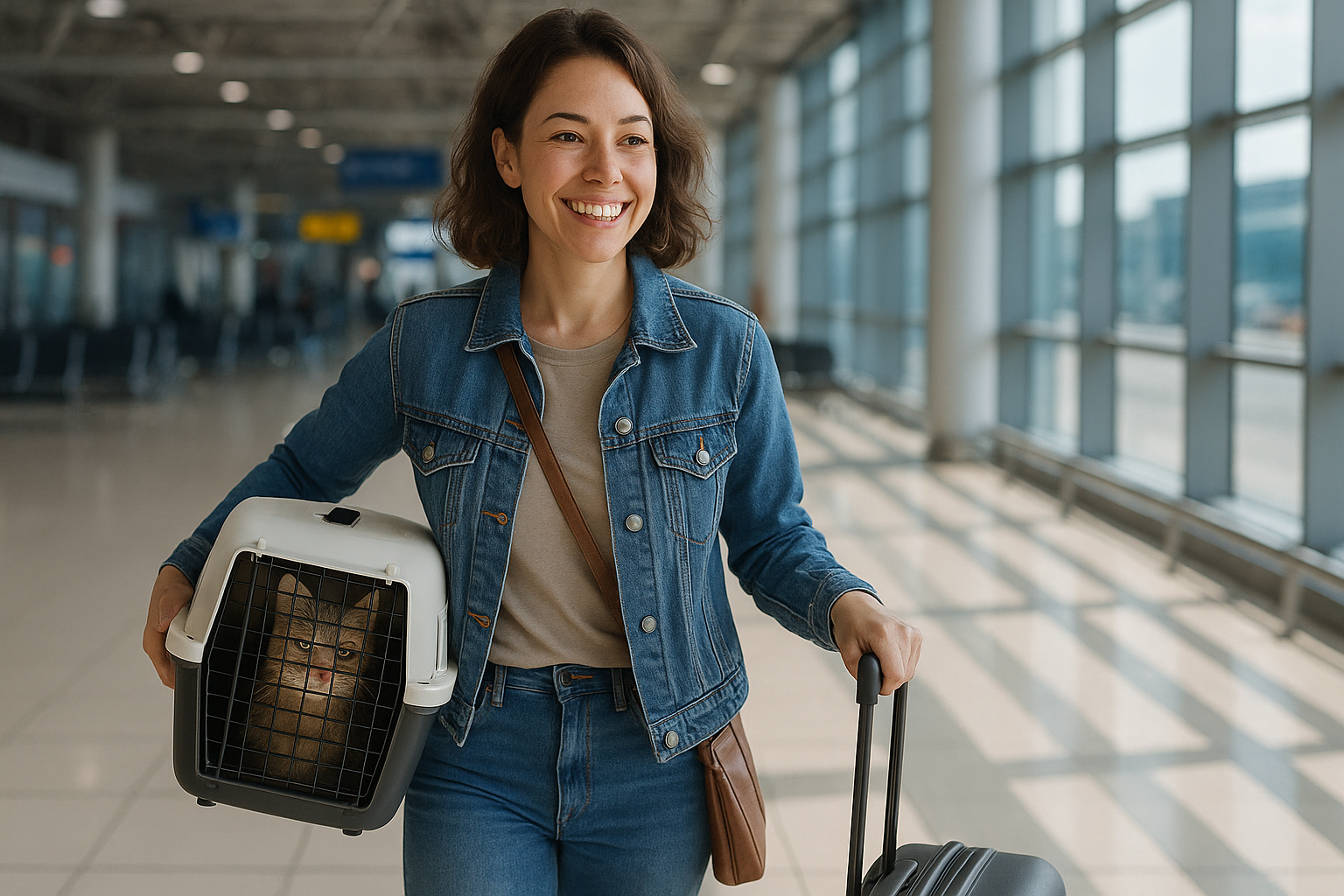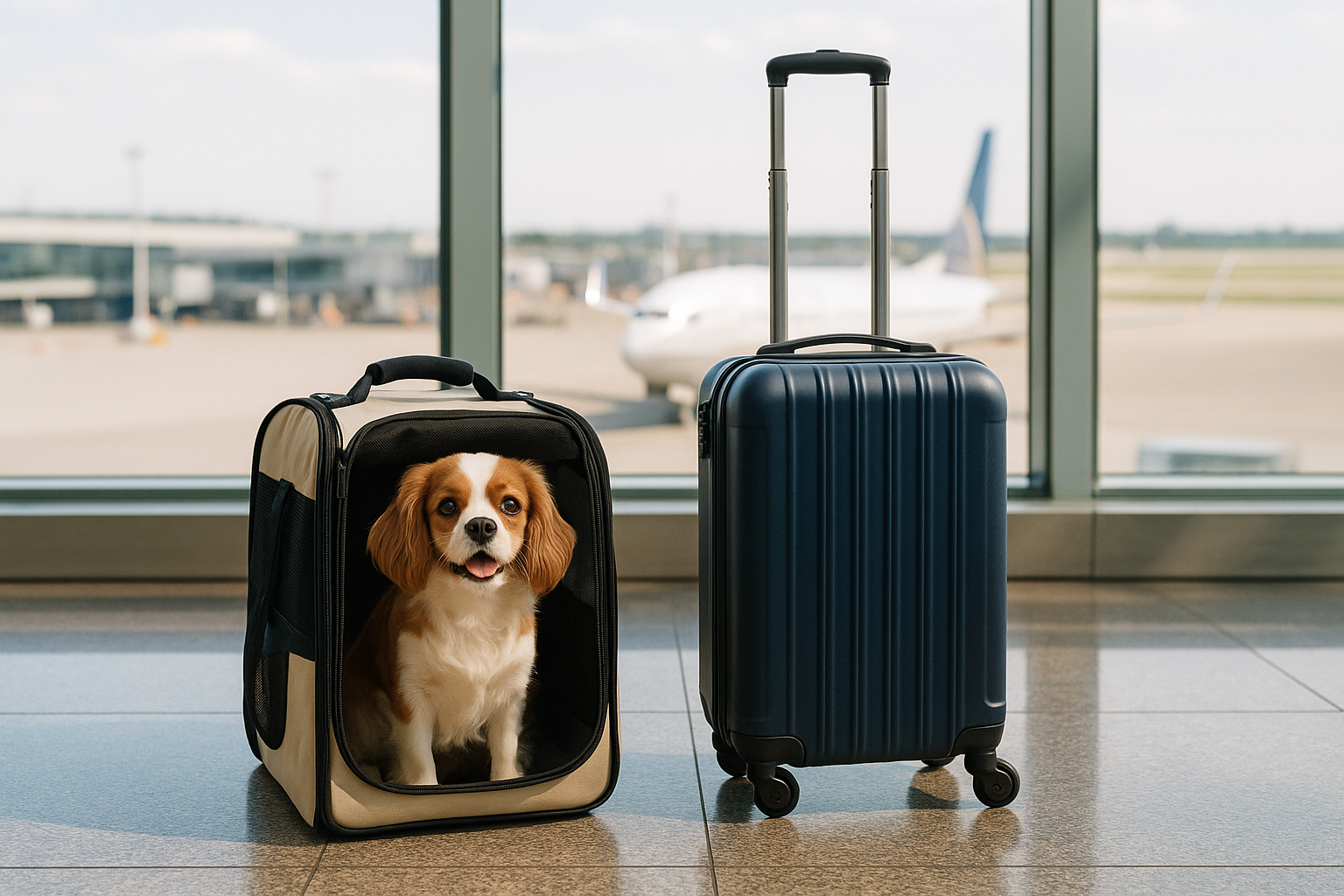Flying with your furry friend soon? Whether you’re heading across the country or embarking on an international adventure, understanding the pet carrier requirements for airlines is essential for a stress-free journey. Choosing the wrong carrier can lead to denied boarding or discomfort for your pet, and that’s the last thing you want on travel day.
In this guide, we’ll cover everything you need to know: from dimensions and ventilation to carrier types and airline-specific policies. Let’s make sure your pet travels as safely and comfortably as you do!
Table of Contents
Why Carrier Compliance Matters 🏢🐶
Airlines enforce strict rules for pet carriers, and for good reason. Proper carriers ensure your pet is safe, secure, and comfortable during flight. For pets flying in the cabin, the carrier must fit under the seat. For pets in cargo, it must meet international safety standards.
Ignoring these requirements could mean your pet gets bumped to cargo unexpectedly, or worse, isn’t allowed to fly at all.
1. Types of Pet Carriers ✈️🐾
There are two main types of carriers used in air travel:
Soft-Sided Carriers
- Best for in-cabin travel
- Flexible and can fit under most seats
- Lightweight and easier to carry
Hard-Sided Carriers (Kennels)
- Required for cargo hold travel
- Durable and impact-resistant
- Often include ventilation holes on all sides
Many airlines have specific brands and dimensions they accept, so double-check with your airline before buying a new one.
2. General Airline Requirements for In-Cabin Carriers 🚗🤝
Although each airline has its own set of guidelines, here are the standard must-haves for in-cabin pet carriers:
- Size: Must fit under the seat in front of you
- Ventilation: At least 2 sides must allow air flow
- Secure Zipper: No chance of accidental escape
- Waterproof Bottom: For easy cleaning and hygiene
- Comfortable Padding: Soft interior to reduce anxiety
Most airlines list their specific measurements online. For example, American Airlines allows 19″ x 13″ x 9″ carriers in-cabin.
3. Requirements for Cargo Hold Travel Carriers 🏢🚴
If your pet must fly in the cargo hold, the carrier needs to meet IATA (International Air Transport Association) standards.
Key requirements:
- Hard-sided plastic or metal only
- Secure locking door that your pet can’t open
- Ventilation on at least 3 sides (4 is ideal)
- Absorbent bedding (towels or airline-approved pads)
- Handles and “Live Animal” labels
- Food and water bowls that attach inside the door
Check the IATA Pet Travel Guidelines for global cargo carrier standards.
4. Airline-Specific Pet Carrier Policies 🚌📦
Here’s a quick summary of some major airlines and their carrier rules:
United Airlines (North America)
- Soft-sided carriers: 18″ x 11″ x 11″
- Hard-sided: 17.5″ x 12″ x 7.5″
- Must fit under the seat in front
Delta Airlines (North America)
- Encourages soft-sided carriers for flexibility
- Carrier must be ventilated on at least 2 sides
Alaska Airlines (North America)
- Soft carrier: 17″ x 11″ x 9.5″
- Hard carrier: 17″ x 11″ x 7.5″
- Pet + carrier combined weight: Max 20 lbs
JetBlue (North America)
- Carrier dimensions: 17″ x 12.5″ x 8.5″
- Only one pet per carrier
- Pet must remain inside at all times
LATAM Airlines (South America)
- Max carrier dimensions: 19″ x 13″ x 9″
- Pet must remain inside the carrier
- Max weight (pet + carrier): 15 lbs for cabin
- LATAM Pet Travel Policy
Lufthansa (Europe)
- Soft carriers allowed in cabin: 22″ x 16″ x 9″
- Max weight: 17 lbs (including pet)
- Must be waterproof and ventilated
- Lufthansa Pet Travel Policy
Emirates (Middle East)
- Pets not allowed in cabin except falcons between certain cities
- All other pets travel in cargo
- Requires IATA-compliant carriers
- Emirates Pet Travel Policy
Qantas Airways (Oceania)
- Pets cannot travel in the passenger cabin
- Must travel as checked baggage or freight
- IATA-compliant carrier required
- Qantas Pet Travel Policy
Singapore Airlines (Asia)
- No pets in cabin (except service animals)
- Pets travel as checked baggage or cargo
- Carrier must meet IATA standards
- Singapore Airlines Pet Travel
These guidelines may vary by aircraft model, so always call or check online before your flight.
5. Carrier Comfort and Safety Features 🌟🦴
A carrier isn’t just a travel crate — it’s your pet’s safe haven during the journey.
Look for features that improve comfort:
- Mesh sides for airflow
- Top and side entry options for easy access
- Soft, machine-washable bedding
- Interior leash clips for extra safety
If your pet is prone to anxiety, consider a pheromone spray or calming blanket. Always test the carrier at home before flying.
6. How to Measure Your Pet for a Carrier 🔢📏
Getting the size right is crucial. Use this formula:
- Length: Nose to base of tail
- Height: Ground to top of ears or head (whichever is higher)
- Width: Shoulder to shoulder
Your pet should be able to stand up, turn around, and lie down comfortably. Don’t rely solely on breed-specific size charts.
7. How to Train Your Pet to Use a Carrier 📚🐾
Training can ease stress and prevent mid-air meltdowns.
Steps:
- Place treats or toys inside to create positive associations
- Let them explore with the door open for a few days
- Start closing the door for short periods
- Gradually increase the time and simulate movement
This is especially important for first-time flyers.
8. Travel Tips for Smooth Carrier Check-In 🚨🚐
Avoid last-minute surprises:
- Arrive at least 2 hours early for domestic flights
- Bring copies of your pet’s health certificate and ID
- Label the carrier with your name, contact info, and destination
- Don’t sedate your pet without veterinary guidance
Want to learn about required travel documents too? Check our full guide on Pet Travel Documents and Requirements.
Recommended Carriers by Pet Size 🐹🐈
Small pets (<10 lbs):
- Sherpa Deluxe Pet Carrier (fits most airline seats)
- Sleepypod Air In-Cabin Pet Carrier
Medium pets (10–20 lbs):
- AmazonBasics Soft-Sided Pet Travel Carrier
- Petmate Two Door Top Load Kennel
Large pets (>20 lbs, cargo only):
- SportPet Rolling Plastic Kennel
- Aspen Pet Porter Heavy-Duty Carrier
FAQs About Pet Carrier Requirements for Airlines 💭🥪
1. Can my pet sit on my lap instead of in a carrier? No. Pets must remain in the carrier under the seat for the duration of the flight.
2. What happens if my carrier is slightly too big? It may not fit under the seat, and your pet could be denied cabin access. Always follow airline dimensions.
3. Do airlines provide carriers? No. You must bring your own airline-compliant carrier.
4. Can two small pets share one carrier? Most airlines do not allow more than one pet per carrier. Exceptions are rare and require pre-approval.
5. Is a backpack-style carrier allowed? Some soft-sided backpacks are permitted, but they must still fit under the seat and meet all other airline requirements.
Final Tips: Flying High and Paw-sitive! 🌌🐾
Choosing the right pet carrier isn’t just about airline rules — it’s about making sure your beloved companion is secure and comfortable every mile of the way.
Stick to the official guidelines, do a few test runs, and talk to your vet if you’re unsure.
Want more flying tips for pets? Explore our latest guide on Preparing Your Pet for Air Travel for more advice.
We’d love to hear from you! What’s your go-to pet carrier brand? Share your tips and stories in the comments!
And don’t forget to subscribe to our Pawfect Life Newsletter for the latest pet travel advice and trends! 🌟

Passionate about animals and an expert in pet behavior, I created Pawfect Life to help you better understand and care for your companion—whether they have fur, scales, or feathers. Here, I share practical tips and reliable information to ensure a happier, healthier life for your pet. Let’s embark on this journey together! 🐾✨

